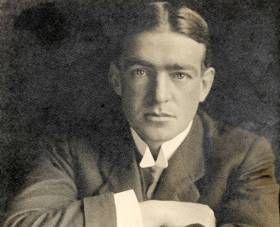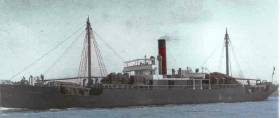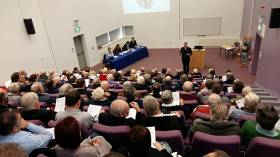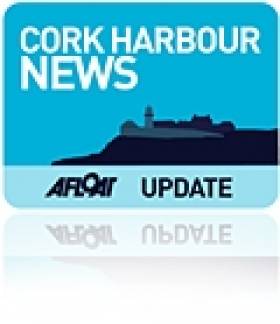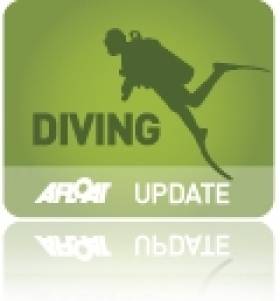Displaying items by tag: Aud
Podcast: Shackleton, Blue Economy & Open Sea Swimming
Hello and welcome aboard your maritime programme Seascapes, this week we bring you highlights from the unveiling of a fine sculture by Mark Richards in Athy, Co Kildare on the centenary to the day of the rescue of the Endurance crew from Elephant Island and the unveiling of a sculpture by Mark Richards of Sir Ernest Shackleton beside the Athy Heritage Centre in his home place complete with an Honour Guard from the Irish Naval Service, we’ll be talking to Kevin Kenny of Athy Heritage Centre ; Commander Cormac Rynne of the Irish Naval Service; Arts Officer Lucina Russell and Jack L who performed “The Wearin’ of the Green” and we also met up with Jonathan Shackleton ...... also this week Dr Gordon Dalton of MAREI on the Maribe project and the outcome of a recent conference held in Cork....first this week here on Seascapes to our Galway Studios where we can hear from Features Editor Gery Flynn of Inshore Ireland Magazine on what’s in the latest edition ...
Features Editor of Inshore Ireland magazine – Gery Flynn ....next here on Seascapes to Athy in Co Kildare where .............to coincide with the very day a hundred years ago on the 30th of August that epic rescue of The crew of The Endurance from Elephant Island was marked by a sculpture by Mark Richards being unveiled by the Mayor of Kildare , Cllr Ivan Keatley and Alexandra Shackleton with an honour guard drawn from the Irish Naval Service in attendance ....
Also present for the ceremony was local musician Jack L who spoke briefly to Seascapes before he performed this song...
Jack Lukeman performing The Wearin’ of the Green” next we spoke to Jonathan Shackleton ...
Also in attendance was Commander Cormac Rynne of the Irish Naval Service.....
From Commander Cormac RYNNE to Kildare Arts Officer , Lucina RUSSELL..
The Athy Heritage Centre is in the heart of the town and is hosting an exhibition “ By Endurance We Conquer “running until February of next year....
Lets have a final word from Kevin Kenny of Athy Heritage Centre....
MARIBE is Marine Investment for the Blue Economy , Dr Gordon Dalton who is based at MaREI ERI, at University College Cork is Maribe Project Coordinator , we last talked to him earlier this year
Dr Gordon Dalton of MAREI /ERI – Maribe Project Coordinator
We wish swimmers the “Swim Sisters” team of Lynsey Dunne -Connacht, Mary Bolger-Hinds- Leinster, Claudine Hughes -Ulster and Maighread McMahon from Munster , they will attempt to become the first four provinces, all-female team to swim the length of the largest freshwater lake in these islands , Lough Neagh – a distance of approximately 30.5km.
The “Swim Sisters “ are four experienced open water swimmers and members of the Irish Long Distance Swimming Association. And it was through their love of open water swimming that the team the " Swim Sisters " came together. Two of them , Lynsey & Maighread are veterans of two successful English Channel relay swims.You can read more about their swim on the Seascapes webpage....
That’s it for this week on your maritime programme, on the sound desk this week Niall O Sullivan , next week here on Seascapes we bring you the story of the Aud and Sir Roger Casement and highlights from the commemoration held on Banna Strand earlier this year at Easter .....Grainne McPolin was there for Seascapes when she spoke with with H.E. President Michael D Higgins we hear from local historian Pat Lawlor about Sir Roger Casement the humanitarian, explorer and seafarer and descendants of Captain Monteith and Sir Roger Casement ; until next Friday night, tight lines and fair sailing.”
A popular wedding venue a Wedding Fair is being held in The National Maritime Museum of Ireland, Haigh Terrace, Dun Laoghaire on Sunday 18th September open from 12 noon....
Ireland’s National Maritime Museum is housed in Dun Laoghaire’s 180-year-old Mariners Church, directly opposite the new DLR Lexicon library and easily accessible by DART suburban train and several bus services. The museum’s greatest artefact is probably the building itself as it is one of a few custom built places of worship for seafarers remaining intact in the world to-day.
Experienced guides will bring you on a voyage of discovery enthralling you with stories of discovery, heroism, war and disasters at sea. You will learn about maritime history, exploration, navigation, radio, deep-sea cable technology, nature, wildlife and view art inspired by the sea.
See the 10-tonne revolving Baily Optic, try the electrified steam engine and pause to reflect at the Titanic exhibit, the re-created radio room, the Royal Navy prisoners docks and the war memorial. Try sailor’s knots, learn how they lift heavy weights, be photographed with the pirate, research in the library, visit the shop and café and much more.
An Island Nation – But Not Yet A Maritime One!
I love Irish history. It is the story of the Irish people, living in an island nation. But I have always wondered about a maritime, a shipping aspect of the Easter Rising, the commemoration of which has raised the profile of our evolution as an independent country. And that is – would it actually have been possible for the AUD, the German ship with weapons and ammunition for the Irish Volunteers, by arrangement with Roger Casement, to have landed its cargo in Tralee Bay, which is the accepted historical conception of that part of the plans for the Rising.
I have always wondered about the challenge and difficulties of getting 20,000 rifles, 10 machine guns and 3.5 million rounds of ammunition off that ship in the conditions and shipping facilities of Tralee Bay and the probably only realistic landing site at Fenit in 1916.
Was it to have been done at Fenit? In the facilities there for unloading in 1916 would that actually have been possible? Was it thought that the cargo might be got off into open boats in the Bay?
I got my opportunity to ask that question of an expert on the period last weekend, Dr. John Treacy, who was recently awarded his Ph.D. from Mary Immaculate College in Limerick for his doctoral thesis about the Naval Service.
He answered me very directly: “I would say absolutely not.”
He had a lot more to say about the AUD and the plan for it to provide weaponry for the Volunteers when I interviewed him at a seminar which underlined the huge public interest in Irish maritime affairs. “Revolution on an Island -The Maritime Aspects of the 1916 Rebellion,” was organised by the Irish Maritime Forum. It was booked out. People attended from all over the country. There was even a waiting list for places at the National Maritime College in Ringaskiddy on the edge of Cork Harbour where it was held.
Dr. Treacy spoke on ‘The Silent Shore – The Attempt to land arms at Banna Strand from the AUD.” It is a fascinating part of Irish history and the maritime involvement. If you have any interest at all in our history, I urge you to listen to him below on my programme, THIS ISLAND NATION.
It was also an unusual experience for me at that seminar to find myself being quoted at the outset. It was for my description of Ireland as an “island nation” which is accepted by the Forum, which is an independent think-tank on maritime matters. But the Forum had a qualification – “Ireland is not yet a maritime nation”
You can hear more about this from retired Naval officer, Capt. James Robinson, who discusses it with me on behalf of the Forum. Not a lot has been heard about the Forum in public, but this seminar was a revelation.
Simon McGibney, the new Commodore of the Irish Cruiser Racing Association, talks to me about his plans for this year’s sailing and the retirement of one of the country’s longest-serving lifeboatmen, from the RNLI Rosslare Station, is reported while there is also good advice on the programme about using vehicles to launch and recover boats from slipways in view of the Buncrana tragedy.
THIS ISLAND NATION reports on the marine traditions, culture, history and modern maritime developments of our island nation. I hope you enjoy it and would welcome your comments. You can Email to: [email protected]
Ireland is an island nation but not yet a maritime nation. So said Capt. James Robinson of the Irish Maritime Forum and formerly of the Irish Naval Service when opening the Forum's conference at the National Maritime College in Ringaskiddy, Cork Harbour, this morning. Attendance at the one-day conference 'Maritime Aspects of the 1916 Rebellion' has been fully booked-out. It is examining the influence of sea power on the rebellion, including the Aud and the Helga. People are attending from all over the country.
#CORK HARBOUR NEWS - Two anchors were recovered recently from the wreck of the historic Easter Rising gun running vessel in Cork Harbour, as The Irish Times reports.
Divers led by Eoin McGarry from Dungarvan and archaeologist Laurence Dunne from Tralee retrieved the anchors from the wreck of the Aud some 36 metres below the surface on Tuesday 19 June, in an operation that was two years in the planning.
The Aud was carrying 20,000 rifles and millions of rounds of ammunition in a shipment from the German military, arranged by Roger Casement, when the British navy uncovered the plan and took the vessel as it approached Tralee Bay.
But the vessel was scuttled by its Captain Karl Spindler as the ship was being taken to Cork Harbour. The wreck has rested at the bottom of the harbour near Daunt's Rock ever since.
The Department of Arts, Heritage and the Gaeltacht says the anchors will be undergoing conservation work over the next three years and will eventually be displayed in various locations provided by Cobh Town Council and Tralee and Fenit Harbour Commissioners.
RTÉ News has video footage of the dive team's discoveries, while The Irish Times has more on the story HERE.
Historic Lecture on the Easter Rising Vessel, The Aud
Embedded in the history of Ireland, the events which occurred in April 1916 place Roger Casement and his famous gun running ship in the annals of Irish history. She lies broken, in a depth 34 metres in Cork Harbour. Much of the cargo of 20,000 guns and 1,000,000 rounds ammunitions still remain writes Timmy Carey. The ship was scuttled by her captain Karl Spindler rather than hand the cargo to the British. This would be the only German naval surface ship to enter Irish waters during World War 1. The wreck was depth charged on a number of occasions to make sure that the weapons were scattered and made unrecoverable by rebel forces and to prevent submarines using the wreck as cover. The rifles and much of the ammunition originated in Russia. They were captured as a result of the rout of Russian forces at the battle of Tannenburg in 1914.
This coming Friday night Blackwater Sub Aqua Club in Fermoy will host a lecture on the Aud by author Xander Clayton. Xander is a researcher of Modern Irish history and is the leading authority on the Casement Ship. He has made a detailed study of the ship and her 22 man crew over the past quarter century, culminating with the publication of the book "AUD" in 2007. He now lives in Ireland and the second edition of his book is due for imminent publication. The lecture will start at 20:00 and is free of charge. The venue is Blackwater Sub Aqua Clubhouse, Rathealy Road, Fermoy. For further information contact Matthew Culotty 087-8217069.

Xander Clayton author of the book "Aud"
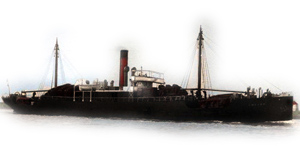
An image of the Aud ship before she was scuttled at the entrance to Cork harbour where she lies today
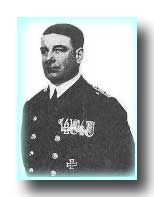
Karl Spindler the German captain of the Aud


























